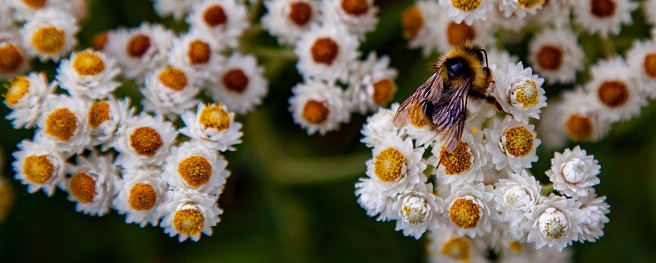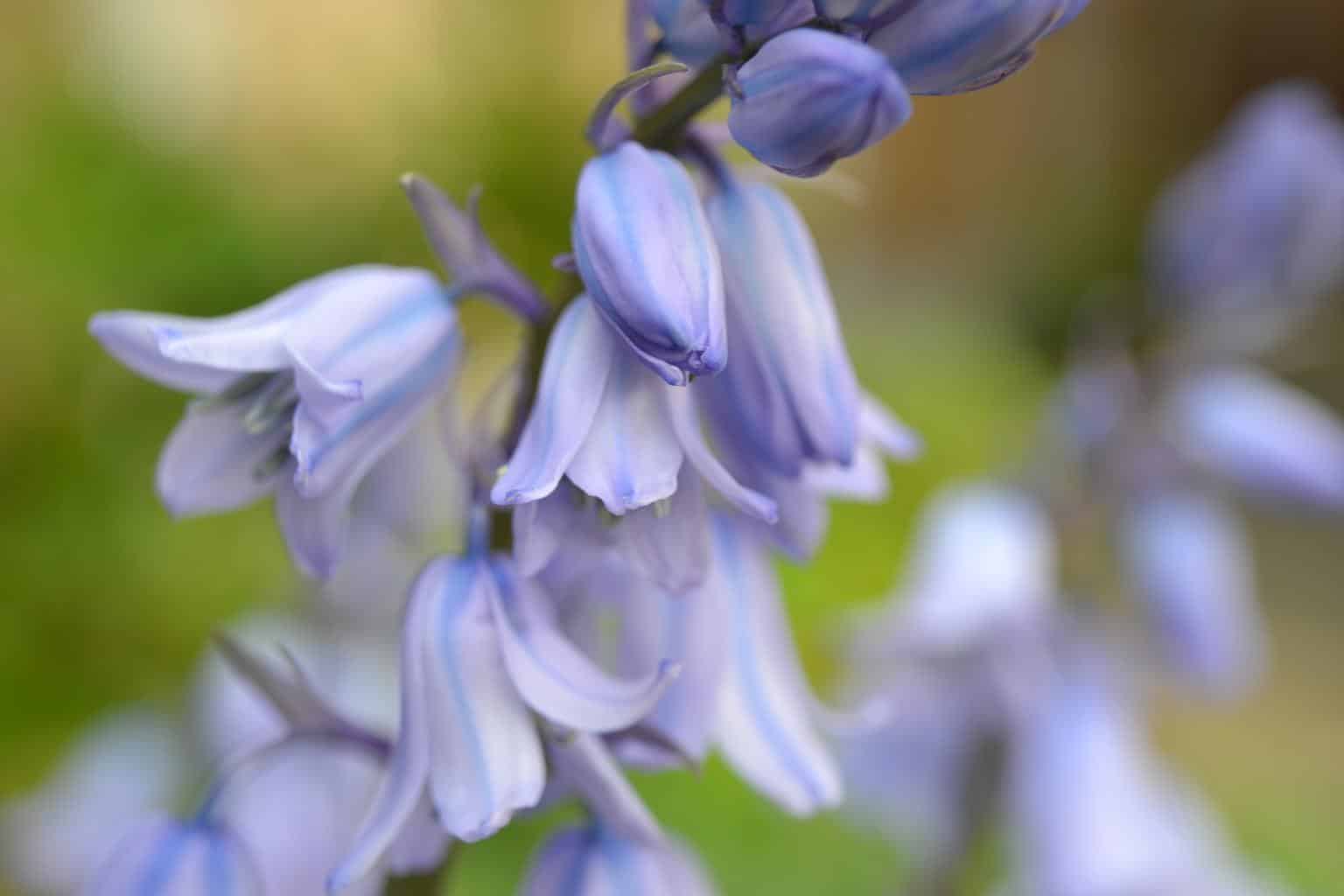Pearly Everlasting (Anaphalis margaritacea) is a bushy perennial that is topped with clusters of button-like flowers. The centers are small and yellow, surrounded by white-papery bracts that look like petals. It has been awarded the RHS Garden Merit and makes an ideal companion for colorful plants on any border. Plus, it is an excellent cut flower for dried bouquets. It blooms in mid-summer to fall.
The genus name Anaphalis is from the Greek word — anaphallein, which means to flower abundantly. The species name margaritacea, is derived from the Latin word margarita, which is translated as pearl – fittingly describing the shape and color of the white-bordered flowers.
How to Plant
Pearly everlasting needs well-draining soil with a slightly acidic pH. It will do best in full sun in well-drained soils, but can tolerate partial shade. To help encourage healthy growth, add compost or aged manure to the soil to enrich it. Water your Pearly Everlasting regularly, allowing the soil to dry out slightly between watering. Make sure to keep a consistent temperature, somewhere between 60 and 75°F.
Meaning and Symbolism
When a special gift or token is given containing Pearly Everlasting, it signifies that a pleasant memory of the recipient will last forever. Many cultures wear a wreath of Pearly Everlasting to signify never-ending love. The dainty texture of the flower heads make them extremely popular for use in dried flower arrangements and wreaths.
History, Mythology, and Religious Significance
The Pearly Everlasting been part of many cultures’ folklore and superstitions over the years.In China’s past, a Pearly Everlasting was believed to be a symbol of immortality, while in North America, Native American tribes used it to treat several different ailments. They would also use it to attract good spirits and keep away negative energy.
In some countries, priests and spiritual figures used to wear a wreath of Pearly Everlasting on their heads. It also symbolizes gratitude and hope. A wreath of Pearly Everlasting has also been made and used as grave decorations since the 19th century.
Flower Varieties and their Defining Characteristics
Pearly Everlastingis part of the sunflower family (Asteraceae), with the scientific name Anaphalis margaritacea. It is an herbaceous perennial, meaning it has short woody stems that live for around two years. The unique shape of its papery white bracts and yellow disk centers makes this flower a standout in the garden.
Pearly Everlasting is most often seen in shades of white and yellow, but there are other varieties that are available, such as the pink Pearly Everlasting, which has pink-tinged flowers.
How to Pot and Repot
The best time to pot or repot your Pearly Everlasting is in the early spring, just before its active growth period begins. When repotting, make sure to choose a pot with plenty of drainage holes and fill it with potting mix that will promote healthy drainage. Place the plant in the pot and fill in any gaps with additional potting mix. Be sure to water it immediately after planting.
How to Prune
Pruning your Pearly Everlasting is an essential pest and disease management task. Pruning helps to control the plant’s size and shape, and it can also help with air circulation, which helps the floral display last longer. To keep your Pearly Everlasting looking its best, cut out any dead or damaged stems. Make sure to prune in mid-spring, before the plant begins its active growing period.
How to Propagate
Propagating Pearly Everlasting is a great way to increase your crop or to give as gifts. This can be done by cuttings or by seed. To propagate using cuttings, select a healthy stem of the Pearly Everlasting and cut it with sterile scissors. Make sure to make a clean cut to the base of the stem. Dip the end in a rooting hormone and place the stem in moist potting mix.
Common Pests and Diseases
Pearly Everlasting is a fairly resilient and hardy plant. However, it is still prone to some pests and diseases, such as aphids, spider mites, whiteflies, powdery mildew and rust. These pests and diseases can be avoided through proper care and attentive monitoring for any signs of pests or disease. If you notice any pests or disease, make sure to treat them promptly with the appropriate insecticide or fungicide.
Frequently Asked Questions
Q: When is the best time to plant Pearly Everlasting?
A: The best time to plant Pearly Everlasting is in late spring or early summer.
Q: How long will Pearly Everlasting bloom?
A: Pearly Everlasting will typically bloom from mid-summer to fall.
Q: How can I encourage more blooms?
A: To encourage more blooms, make sure to water regularly, deadhead spent blooms, and provide a warm environment for the plant. It is also beneficial to use a high-potassium fertilizer to help promote more blooms.
Fact Sheet
| Flower Name | Pearly Everlasting |
|---|---|
| Scientific Name | Anaphalis margaritacea |
| Family | Asteraceae |
| Plant Type | Perennial |
| Mature Size | 1–2 feet |
| Sun Exposure | Full sun to partial shade |
| Soil Type | Well-draining, slightly acidic |
| Soil pH | 5.8–7.5 |
| Bloom Time | Mid-summer to fall |
| Flower Color | White, yellow, and pink |
| Hardiness Zones | 3–8 |
| Native Area | Eastern North America |
What we love from Amazon this week
Buy these wonderful flowers directly from Amazon:















